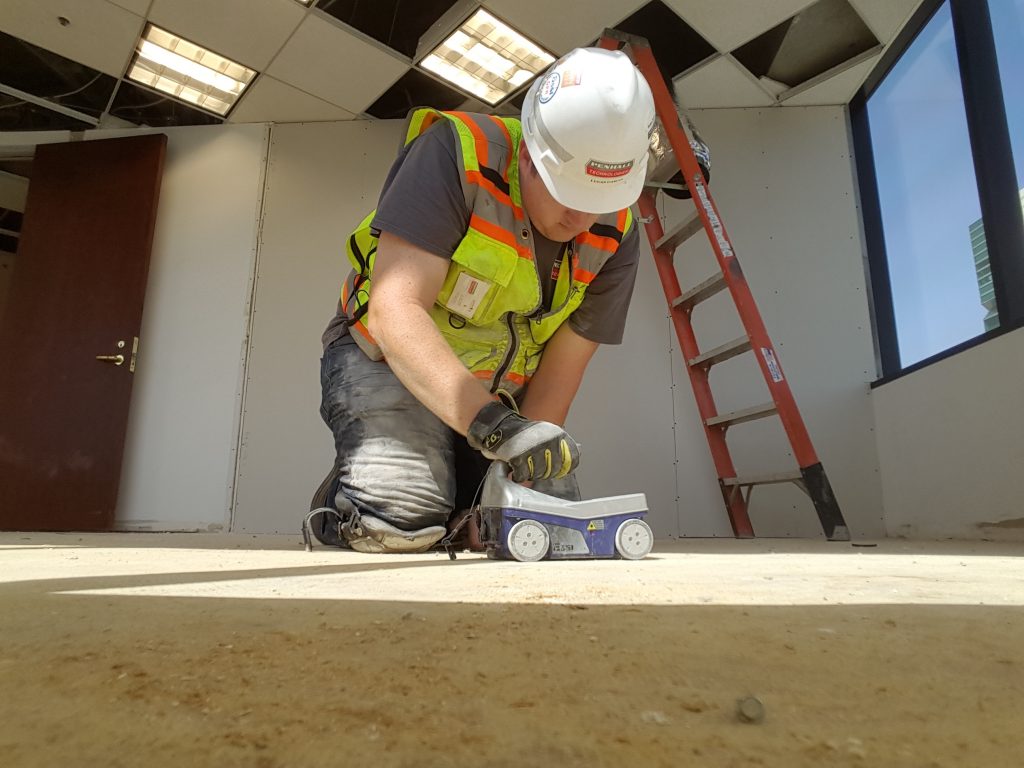RainierGPR Service Areas: Comprehensive Coverage for Concrete Scanning
RainierGPR Service Areas: Comprehensive Coverage for Concrete Scanning
Blog Article
Enhancing Project Preparation and Execution Via Advanced Concrete Scanning Techniques
In the realm of job planning and insight, precision and execution are important elements that can make the difference between success and troubles. Advanced concrete scanning methods have arised as an advanced tool set to raise the criteria of job administration within the building and construction sector.
Benefits of Advanced Concrete Scanning Techniques

Improved Accuracy in Job Assessments
Enhancing task evaluations through innovative concrete scanning strategies considerably improves the accuracy and reliability of building and construction assessments. By using advanced scanning modern technologies such as ground-penetrating radar (GPR) and 3D imaging, task teams can currently get thorough understandings right into the problem of concrete structures, recognizing possible flaws or weaknesses that might not show up to the naked eye. This boosted degree of accuracy in project evaluations makes it possible for building and construction professionals to make even more educated choices regarding repair and maintenance techniques, resulting in enhanced general task outcomes.
Moreover, the raised accuracy in job analyses attained via advanced concrete scanning strategies assists in lessening the danger of unanticipated concerns during the construction stage. By proactively discovering covert anomalies within concrete frameworks, such as rebar rust or spaces, task groups can attend to these problems at an early stage, avoiding pricey hold-ups and rework later in the task lifecycle. Inevitably, the improved accuracy in job evaluations assisted in by innovative concrete scanning methods adds to greater effectiveness, cost-effectiveness, and quality in construction jobs.
Very Early Identification of Architectural Challenges
Early discovery of architectural challenges plays an important role in making certain the stability and safety and security of concrete structures throughout the construction process. Identifying potential concerns at an early stage permits for timely treatment, stopping pricey rework, timetable hold-ups, and security hazards. Advanced concrete scanning strategies, such as ground-penetrating radar (GPR) and 3D imaging, allow task groups to uncover covert issues, voids, support design inconsistencies, and other anomalies that could jeopardize the framework's security.
By carrying out these strategies throughout the preparation and execution stages, building professionals can proactively resolve structural obstacles before learn the facts here now they rise into significant issues. As an example, detecting inadequate concrete cover over reinforcement bars at an early stage can avoid rust and architectural weakening in the lengthy run - RainierGPR Service Areas. Additionally, identifying variants in concrete thickness or density can aid optimize material usage and ensure consistent strength residential properties across the structure
Eventually, very early recognition of architectural difficulties with sophisticated concrete scanning not just enhances the total high quality and resilience of the building and construction yet also contributes to a safer developed setting for passengers and customers.
Enhanced Security Actions in Building
The implementation of durable safety protocols is imperative in the building and construction sector to alleviate dangers and safeguard the health of stakeholders and workers. To enhance safety steps, construction firms are progressively adopting technical innovations such as wearable gadgets that keep an eye on workers' vital indicators and discover potential health concerns in real-time. By prioritizing safety via the unification of advanced modern technologies and extensive training programs, construction tasks can considerably reduce crashes and create a safe and secure functioning environment for all entailed.
Streamlining Project Monitoring Processes
To optimize operational effectiveness and make sure job success in the building market, a focus on simplifying project monitoring processes is necessary. By executing effective task monitoring processes, building and construction projects can reduce hold-ups, reduce expenses, and enhance overall performance. One key element of enhancing task management is the use of innovative technologies such as Structure Details Modeling (BIM) software, which enables real-time partnership, clash discovery, and precise job scheduling. In addition, the fostering of cloud-based task management platforms permits seamless communication amongst employee, immediate access to job data, and the capability to track progression in real-time.

Conclusion
Finally, the usage of advanced concrete scanning techniques offers countless advantages for task planning and implementation. These methods provide enhanced precision in task assessments, very early recognition of architectural difficulties, improved precaution in construction, and streamlined job management processes. Incorporating these techniques into project workflows can eventually bring about a lot more successful and reliable end read this article results in construction jobs.
Ultimately, the enhanced precision in project assessments promoted by advanced concrete scanning techniques adds to better effectiveness, cost-effectiveness, this contact form and quality in building and construction jobs. RainierGPR Service Areas.
To enhance functional performance and guarantee task success in the building and construction sector, an emphasis on simplifying project administration procedures is important. By implementing efficient job administration procedures, building and construction jobs can minimize delays, reduce costs, and boost overall efficiency. By simplifying task administration processes via innovation combination, clear communication, and data-driven techniques, building projects can attain greater performance, cost-effectiveness, and successful results.
These techniques offer better accuracy in project assessments, very early recognition of architectural obstacles, boosted safety and security measures in building and construction, and structured task administration processes.
Report this page